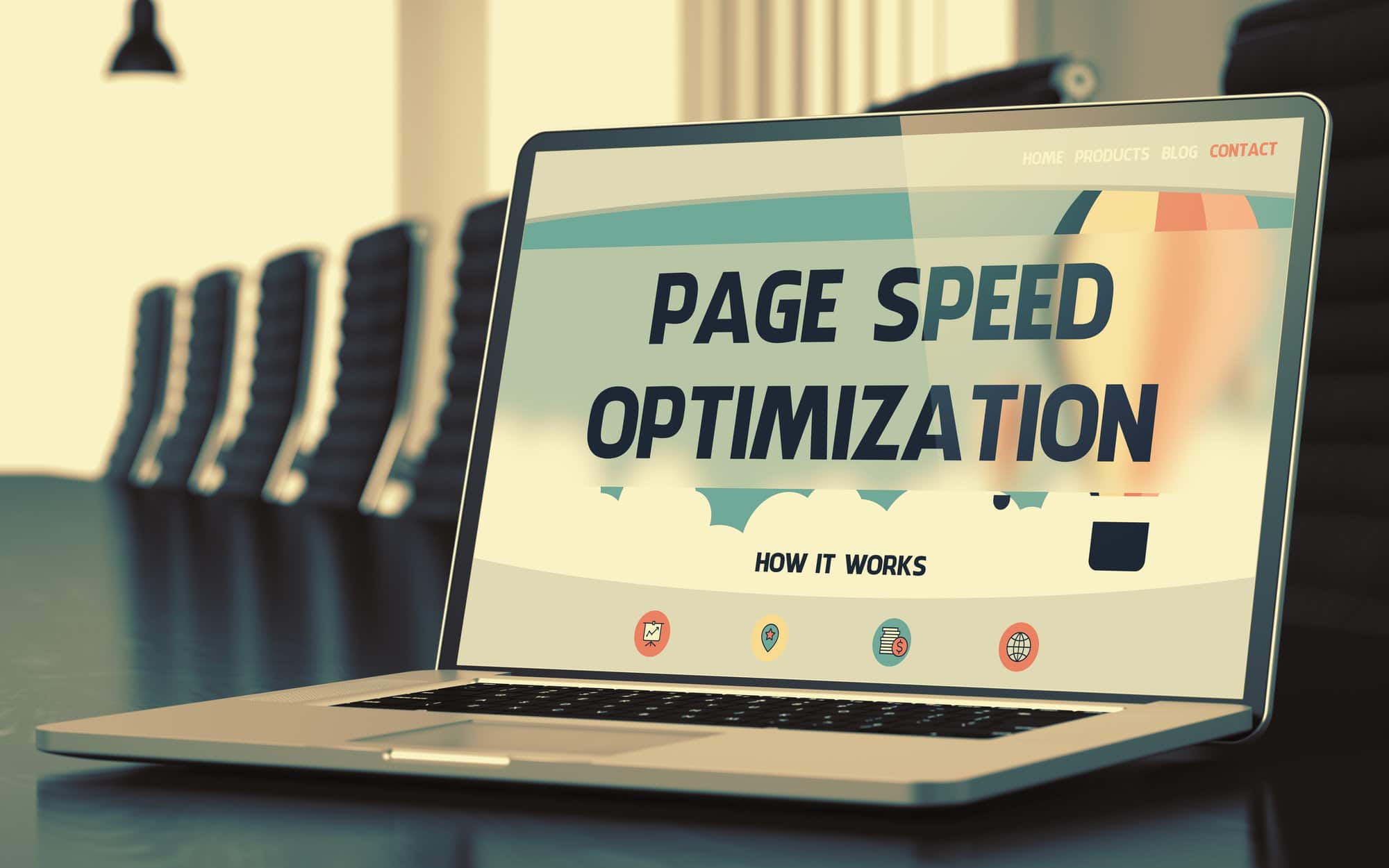What the heck is web page loading speed? Most small business owners don’t know much about it.
Yet, you should know what page loading speed is. More importantly, you should know how it impacts the flow of visitors to your website.
Why? Faster websites are good for users, especially on mobile devices.
Fast page speed can even help with Google search rankings. On the other hand, slow website performance may stop people from staying long enough on your site to decide to contact you. Or worse, your slow site could prevent them from even getting there altogether.
“Loading” happens when prospective customers connect to the host server where your website files are stored. When they do, their device (the browser) downloads all files relevant to the web page they’re interested in.
This includes images, text, JavaScript, cookies, and all code related to that page. The more content and features on the page, the longer it can take. The longer it takes, the higher your “abandon rate” will be. That refers to the people who leave the page rather than wait for it to load and appear fully formed in their browser.
Three Website Speed Scores to Watch

For a website maintenance provider like me, web page loading speed has become an increasingly common—and important—concern of daily life.
Our website monitoring system sends me reports on the sites we maintain daily. If a site isn’t performing to standards, the system issues a report detailing what could be improved to make the site load faster.
There are various ways to measure. We use the GT Metrix website to check website speed. There are others, like Pingdom, WebPageTest, etc. We like GT Metrix since it is trusted by web professionals and provides a lot of helpful information. Essentially, it addresses various things that cause a website to load slower. GT Metrix displays a score for each and highly technical suggestions on improving site speed.
As a layperson, you can ignore all the details and watch three overall scores:
- PageSpeed Score
- YSlow Score
- Fully Loaded Time
The first two give an “A” through “F” score depending on the algorithms’ perception of how the site is configured to render pages. At first glance, these seem to be the most important scores. After all, if a site gets a B or an A, isn’t that good? Or, if it gets an F, isn’t that bad?
Don’t get Fooled by the Letter Grades!

Yes, it’s good to get a higher score. That said, the letter grades are only guides to tell you how your site is doing against a set of criteria. They don’t actually measure site speed!
What REALLY MATTERS is the time it takes to load your site into a user’s device. This is the “fully loaded time,” measured in seconds (to the tenth). Google would like to see sites load in under two seconds. It’s a lofty goal, and the truth is that VERY few sites today meet that standard.
Google’s research has shown that the average mobile landing page speed was a whopping 22 seconds!
As Google discovered, 70% of pages take 7 seconds to load for the visual content above the fold (first browser view without scrolling). It took 10 seconds to load all visual content above and below the fold fully. This is troubling because, as page load time goes from 1 second to 7 seconds, visitor abandonment on the page increases by 113%.
Hmmm. Not good.
It’s not just abandonment that matters today. Google’s “mobile first” search algorithm depresses sites in search results if they’re too slow.
Think about it… If your site is “average” or below, what does this mean in terms of lost sales opportunities and lost revenue?
What Slows a Website’s Page Loading Speed?
Many things can slow a website.
Image Size
Perhaps the most common issue is improperly sized images, which users can and should control. Images are memory-intensive, so they should be no larger than the size they will appear on the page. WordPress users should crop and resize images BEFORE uploading to the website.
Shared Hosting
Hosting is where your website files are “hosted” (stored) on a server along with many other websites. This is a common practice for small business websites because it’s affordable. However, if some of the sites on your shared server tax the server’s resources, your site may move more slowly at certain times than others.
That’s why your site speed score changes from moment to moment. It’s also why we measure several times and take the best score. Why? Because the best score is a more accurate measure of how fast your site is. We can’t control the server activity, which might slow it at other times.

Scripts and Other Geeky Stuff
There are dozens and dozens of other things that affect site loading speed.
Examples include how JavaScript is delivered, the number of HTTP requests, whether your site links to domains with cookies, and other geeky things that will make your eyes roll back in your head.
My own eyes start to roll with some of this! Take my word for it:
This stuff is probably beyond your understanding and gets into advanced technical realms that only super geeks deal with. It’s also not stuff you can personally control.
Our Standards for Site Speed
As part of our website maintenance service, we optimize sites for page speed. By combining advanced image minification with a premium caching plugin, we can generally get most sites to load in as little as 1-4 seconds. That speed works for most websites—even on mobile—without significant visitor loss. While a few users may abandon sites that load at the top end of this range, the loss is likely to be minimal.
When sites load slower than 4 seconds, we get concerned.
What Can Improve Website Speed
As noted, we can reduce image size and install a caching plugin to help a site load more quickly. But other things lie outside the reach of these measures—like the “really geeky stuff” I mentioned above.
If any of those are impacting your site speed, our standard performance optimization fixes generally won’t cover them. However, we can often improve site speed with manual manipulation by our senior tech. This can take a few hours and is not a free service. However, if you want to speed up your site, it may take 1-3 seconds off the load speed, which can mean more people visiting your site.
What if Your Site Always Measures at Slower Speeds?
If your site consistently measures longer than 4-5 seconds in multiple tests over different testing periods, it may be a candidate for manual optimization. If this is the case, it means a senior tech will have to rearrange the page code. It can take hours and generally requires a lot of testing and re-testing. Feel free to contact us for an estimate.
In these cases, we will call the issue to your attention and may recommend manual optimization. However, the manual work typically succeeds where the automated processes don’t, and the speed improvement is worth the cost.
Questions about website speed? Contact us
Have you got a WordPress website? Check out our website maintenance plans – most clients see increased website performance when switching.



